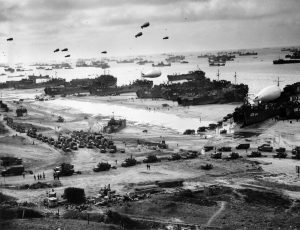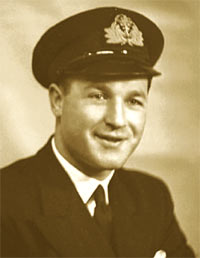- Author
- Swinden, Greg
- Subjects
- Biographies and personal histories, WWII operations, History - WW2
- Tags
-
- RAN Ships
- None noted.
- Publication
- September 2014 edition of the Naval Historical Review (all rights reserved)
By Greg Swinden
With 2014 being the 70th Anniversary of the D-Day landings it is timely to remember the part played by the Royal Australian Navy in Operation Overlord on 6 June 1944. While exact numbers are not known it is estimated that about 300 RAN officers and sailors served in Royal Navy vessels involved in the landing of Allied troops on the shores of Normandy in what became the greatest amphibious operation of all time.
The naval component of the operation was named Operation Neptune. Vessels from battleships through to small landing craft were committed to transporting, protecting, landing and supporting the British, Canadian and US troops who landed on the five beaches at Normandy code-named Omaha, Utah, Gold, Juno and Sword. US troops landed at Omaha and Utah beaches while British and Canadian troops landed at Gold, Juno and Sword beaches. British and American paratroopers had jumped into the Normandy area prior to the beach landings to secure vital bridges and other chokepoints.

Among the RAN personnel who took part in the invasion was 21 year old Lieutenant Dacre Smyth, RAN (later to reach the rank of Commodore) who served in the cruiser HMS Danae that bombarded Sword Beach ahead of the landing. In the frigate HMS Kingsmill, Sub-Lieutenant Roy Hall, RANVR was officer in charge of the forward guns which contributed to the bombardment of Gold Beach. Kingsmill came under German fire and Roy Hall later recalled that an occasional shell landed with a vicious crack in the water nearby, as if by magic raising a column of white water. Some shell splinters hit the ship’s side and superstructure with a loud ‘plink’ which made all those on the exposed gun positions duck, but nobody was hit. The cruiser HMS Ajax engaged this German gun battery and destroyed it. Serving in Ajax at the time were RANVR Lieutenants Robert Fotheringham and Alfred Pearson. Hall and Fotheringham had both joined the RANVR, as Ordinary Seamen under the ‘Yachtsman’s Scheme’, and had later been accepted for commissioned rank. Roy Hall had also previously served in the Mediterranean and been wounded in action while serving in motor gun boats off Sicily in June 1943.
Lieutenant Kenneth Hudspeth, DSC, RANVR joined the Navy in 1940 and while on loan to the Royal Navy had specialised as a submariner. On 4 June he took his midget submarine HM X20, in company with X23, to the coast of Normandy. The two vessels were pre-positioned three miles off the Normandy beaches where they reported on enemy movements. On 6 June both vessels illuminated beacons which acted as navigation markers for the invasion forces. For his bravery Ken Hudspeth was awarded a bar to his Distinguished Service Cross.
Two members of the RAN regrettably lost their lives during the D-Day landings. Melbourne born Sub-Lieutenant Bruce Ashton, RANVR was in command of the Landing Craft Assault Hedgehog 1106. These craft were armed with 24 spigot mortars, firing the Hedgehog anti-submarine mortar, which were used to bombard the landing beaches and hopefully clear mines and obstructions to allow the infantry to advance. Ashton was killed during the assault and his body washed ashore on the beach at Greye–Su–Mer where his remains were temporarily interred before being buried at the main Commonwealth War Graves Commission cemetery at Bayeux. Ashton had joined the Navy in October 1940 as an Ordinary Seaman, and was promoted to Able Seaman before being commissioned in August 1942.
Sub-Lieutenant Richard Pirrie, RANVR was posted as missing presumed killed in action on 6 June 1944. Pirrie had been born in Hawthorn on 6 June 1920 and educated at St Patrick’s College in East Melbourne. He was an all-round athlete and later played Australian Rules Football for Hawthorn in 1940-41, before enlisting as an Ordinary Seaman in September 1941. Richard Pirrie was commissioned in November 1942 and was serving in the assault ship HMS Invicta which landed the 7th Canadian Infantry Brigade at Juno Beach.

During the landing Pirrie, who had turned 24 that day, went ashore to assist in radioing back information regarding German counter battery fire and gun emplacements. He was killed but his body was never recovered and his name was subsequently inscribed on the Plymouth Naval Memorial. On 29 August 1944 Richard Pirrie was posthumously awarded a Mention in Dispatches for gallantry, skill and determination in the initial landing on the coast of Normandy.
By the end of the first day of the landings the Allies had effectively secured all five beach heads and the British, Canadian and American troops were now pouring ashore to start the liberation of France; and the subsequent defeat of Nazi Germany which was achieved just 11 months later. Once again members of the RAN had proven their ability to serve on combined operations and the Navy can be justly proud of its personnel who had the privilege to take part in the greatest amphibious operation in history.




